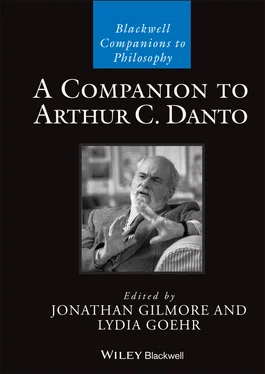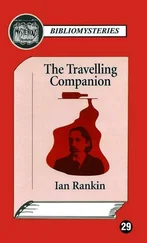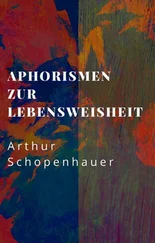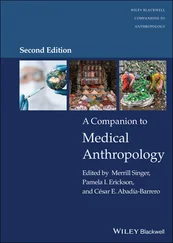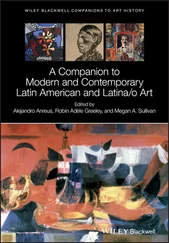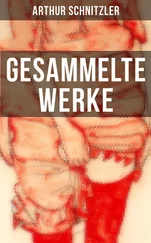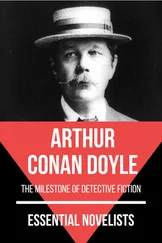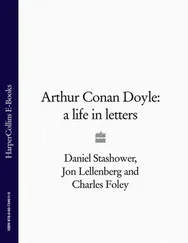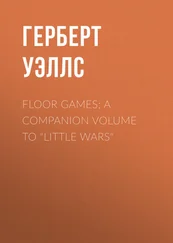A Companion to Arthur C. Danto
Здесь есть возможность читать онлайн «A Companion to Arthur C. Danto» — ознакомительный отрывок электронной книги совершенно бесплатно, а после прочтения отрывка купить полную версию. В некоторых случаях можно слушать аудио, скачать через торрент в формате fb2 и присутствует краткое содержание. Жанр: unrecognised, на английском языке. Описание произведения, (предисловие) а так же отзывы посетителей доступны на портале библиотеки ЛибКат.
- Название:A Companion to Arthur C. Danto
- Автор:
- Жанр:
- Год:неизвестен
- ISBN:нет данных
- Рейтинг книги:5 / 5. Голосов: 1
-
Избранное:Добавить в избранное
- Отзывы:
-
Ваша оценка:
- 100
- 1
- 2
- 3
- 4
- 5
A Companion to Arthur C. Danto: краткое содержание, описание и аннотация
Предлагаем к чтению аннотацию, описание, краткое содержание или предисловие (зависит от того, что написал сам автор книги «A Companion to Arthur C. Danto»). Если вы не нашли необходимую информацию о книге — напишите в комментариях, мы постараемся отыскать её.
Companion
A Companion to Arthur C. Danto
A Companion to Arthur C. Danto — читать онлайн ознакомительный отрывок
Ниже представлен текст книги, разбитый по страницам. Система сохранения места последней прочитанной страницы, позволяет с удобством читать онлайн бесплатно книгу «A Companion to Arthur C. Danto», без необходимости каждый раз заново искать на чём Вы остановились. Поставьте закладку, и сможете в любой момент перейти на страницу, на которой закончили чтение.
Интервал:
Закладка:
But this doesn’t get us very far, either toward a theory of art or toward a plausible phenomenology of interpersonal experience. Sartre and Danto agree that artistic style and expression differ essentially from mundane character and meaning. Artworks are not just immersed unreflectively in their styles the way in which, for instance, linguistic accents go unnoticed by the speakers of a common dialect. Instead, they make their own styles manifest by revealing the way in which they reveal what they reveal. It is this manifestness of style, Danto says, that the transparency theory of art fails to capture:
It is to this coloration that the attributes of style and expression attach, and it is again this coloration that the transparency theory cannot account for. It is part of the representation without being part of the reality, and the transparency theory has no positive room for that difference. … It is as if a work of art were like an externalization of the artist’s consciousness, as if we could see his way of seeing and not merely what he saw (1981, 164).
Since Danto’s thesis is that the essence of art is to cast things under aspects that effect a kind of “metaphoric transfiguration” of their subjects (1981, 168), he cannot be suggesting that artists or artworks themselves are as blind to the styles animating them as people normally are to how they look when they walk, or how they sound when they laugh. On the contrary, he says, what is distinctive of artistic style is not its mere outward aspect, the inscribed character of unreflective habit, but rather its manifest presence in the expressive dimension of the work. What is
interesting and essential in art is the spontaneous ability the artist has of enabling us to see his way of seeing the world – not just the world as if the painting were like a window, but the world as given by him. … The greatness of the work is the greatness of the representation the work makes material (1981, 207, emphasis added).
What constitutes a work of art as a work of art is not style per se , then, but its explicitness, its manifestness, its expressive presence or materialization in the work. And that expressive capacity cannot just be a natural or spontaneous effect available only to observers standing at a historical or personal distance from the works, for it lies at the heart of the artistic achievement. This is why Danto locates the essence of art at “the point of intersection between style, expression, and rhetoric,” adding that “the concept of expression is the most pertinent to the concept of art” – in a word, “art is expression” (1981, 165).
This is where the inadequacy of Sartre’s categories, both in themselves and as conceptual tools for Danto’s theory, becomes clear. By his own admission, Sartre’s favored argumentative technique was to invest heavily in sharp categorical distinctions where common sense and philosophical refinement are inclined to see complexity and ambiguity. Just as there can be no tertium quid between being and nothing, neither is there middle ground between pour-soi and en-soi , consciousness and world, transcendence and facticity, self and other, freedom and causality, poetry and prose. Such stark dichotomies, however, leave no room for the phenomenon of manifest style and artistic expression , which according to Danto constitute the essence of art. Sartre, notwithstanding his early flirtation with the dubious notion of literary and artistic works inhabiting a transcendent sphere beyond the contingency of existence, cannot make sense of an expressive manifestation of style that is neither subjective and transparent, hence invisible to itself, nor objective and opaque, hence estranged in its facticity. Artworks are, for Danto, a blend of transcendence and facticity, of expressive spontaneity and, as it were, engraved character. They are inscriptions , both act and object. But that blend, that middle or unified whole, is what Sartre’s categories are designed to suppress and exclude in phenomenological analysis.
Among the phenomenologists Danto admired, Merleau-Ponty is the one whose reflections on art come closest to his own insight that artworks express, by making materially manifest, ways of seeing the world. Merleau-Ponty did not anticipate Danto’s account of artworks inhabiting the discursive- cum -ontological space of the artworld, nor did he propose anything quite like Danto’s thesis that art involves the deployment of rhetorical tropes, in particular the transfigurative power of metaphor. But that is in part because Merleau-Ponty was not asking the Socratic question that inspired Danto (as it did Heidegger), namely, What is art? His question was instead, What is painting? It wasn’t paint itself that he was interested in, of course, but images . What makes a picture a picture , as opposed to a sign, a symbol, an idea, a thought? What Danto and Merleau-Ponty share is a concept of expression that Sartre’s categories exclude as a matter of principle.
Like literary works, Merleau-Ponty argues, paintings can be said to have a kind of voice . Indeed, the art of painting, like all art, whether it trades in images or in words, is defined by “the phenomenon of expression” (1993 [1945, 1952], 71). Life itself, he even says, is saturated with expression, hence style . Though language can be analyzed as a system of signs, we experience it as opening us onto a world. Speaking and forming images are both ways of evoking, referring, revealing, rendering visible. The writer’s task, Merleau-Ponty says, is to apprehend and make the world manifest through language, and in this respect, “his procedure is not so different from the painter’s” (1993 [1945, 1952], 82). Spoken language is “simply the highest point of a tacit and implicit accumulation of the same sort as painting. … Like a painting, a novel expresses tacitly” (1993 [1945, 1952], 113). Literary language bears a “halo of signification” comparable to “the mute radiance of painting” (1993 [1945, 1952], 114–115). In addition to the explicit, articulate language of words and sentences, “there is a tacit language, and painting speaks in this way” (1993 [1945, 1952], 84).
Merleau-Ponty’s argument was in part a reply to the essay, “What Is Literature?” in which Sartre had drawn a sharp distinction between writing and art, prose and poetry. Whereas language is an instrument for disclosing facts about the world, painting merely uncovers the appearance of particulars: “The painter is mute” (1988 [1948], 27). Sartre’s distinction was not between linguistic and pictorial representation, but between denotation and decoration: “The empire of signs is prose; poetry is on the side of painting, sculpture, and music” (1988 [1948], 28–29).
Merleau-Ponty rejects Sartre’s crude dichotomy by insisting, first, that visual artworks never merely display, but also speak (so to speak) of the things they show, and second, that no language, no matter how artless or prosaic, is wholly styleless, a mere transparent signifying instrument or medium. Pictorial and linguistic expression both embody ways of seeing. Even ordinary seeing and hearing are imbued with a character: “perception already stylizes” by means of an “inner schema,” a “system of equivalences” that coordinates one’s grip on things and allows the world to reveal itself as coherent and intelligible (1993 [1945, 1952], 90–91). For example.
Our handwriting is recognizable whether we trace letters on paper with three fingers of our hand or in chalk on the blackboard at arm’s length, for it is not a purely mechanical movement of our body … but a general power of motor formulation capable of the transpositions that make up the constancy of style (1993 [1945, 1952], 102).
Читать дальшеИнтервал:
Закладка:
Похожие книги на «A Companion to Arthur C. Danto»
Представляем Вашему вниманию похожие книги на «A Companion to Arthur C. Danto» списком для выбора. Мы отобрали схожую по названию и смыслу литературу в надежде предоставить читателям больше вариантов отыскать новые, интересные, ещё непрочитанные произведения.
Обсуждение, отзывы о книге «A Companion to Arthur C. Danto» и просто собственные мнения читателей. Оставьте ваши комментарии, напишите, что Вы думаете о произведении, его смысле или главных героях. Укажите что конкретно понравилось, а что нет, и почему Вы так считаете.
